What Is Vertical Passing In Football?
The aim of the game of football is to progress the ball forward and move as close to the goal as possible to create the best goal-scoring opportunities.
Within this, different teams have different principles, patterns of play and philosophies on how best to do this.
There is no one correct way how to progress the ball but the role of the coach is to ensure that the methods chosen are executed so that they are effective and can thus lead to a side being able to progress the ball consistently.
Vertical passing is no different from any other method of ball progression in this regard as without certain sub-principles and actions supporting the method, a team will consistently lose the ball and fail to progress further up the pitch.
This tactical theory article will provide a tactical analysis of how the tactics and actions of certain teams allow them to be able to use vertical passes effectively.
In addition to this, it will also provide examples of how to train these actions to progress the ball and potentially create goal-scoring chances.
The key actions that support vertical passing
The term vertical passing on its own is somewhat of a loose term.
Regardless of the principles and the type of passes a team chooses to employ in the build-up, at some point they will play vertical passes if it helps them execute other facets of their game model.
In the context of this piece, vertical passing in build-up will be in regards to teams that are positioned and move specifically either within a structure or to create structures that gear them towards playing and receiving vertical passes.
This already implies that vertical passing does not exist in a vacuum, and must be accompanied by other actions that are used in order to make the passes effective.
Some of the most important actions in this regard are overloading the centre of the pitch, players being aware of where best to receive the ball, knowing when to play the ball and how best to support the player receiving the ball (supporting as the third man) and lastly, one of the most important, off-the-ball-runs.
To fully explain how these actions are useful, it would be wise to provide examples of how different teams use them.
De Zerbi’s Brighton and Sarri’s Napoli
Roberto De Zerbis’ Brighton in the Premier League as well as Maurizio Sarri’s Napoli five years ago provide examples of how two teams can have two different approaches with how they try to create vertical passing options.
Nevertheless, the actions mentioned in the previous paragraph can still be observed on both sides.
At this stage in time, much has been written about De Zerbi’s box midfield structure and how his teams utilise this in order to create numerical superiorities across the pitch.
Within this structure, as soon as a backwards or lateral pass is played, the players ahead of the ball are triggered to drop deeper and support the ball carrier, which can be seen in the image below, with Pascal Gross and Moises Caicedo dropping deeper in order to support Jason Steele.
This in turn also acts as a trigger for the player on the ball to play a pass to the dropping players.
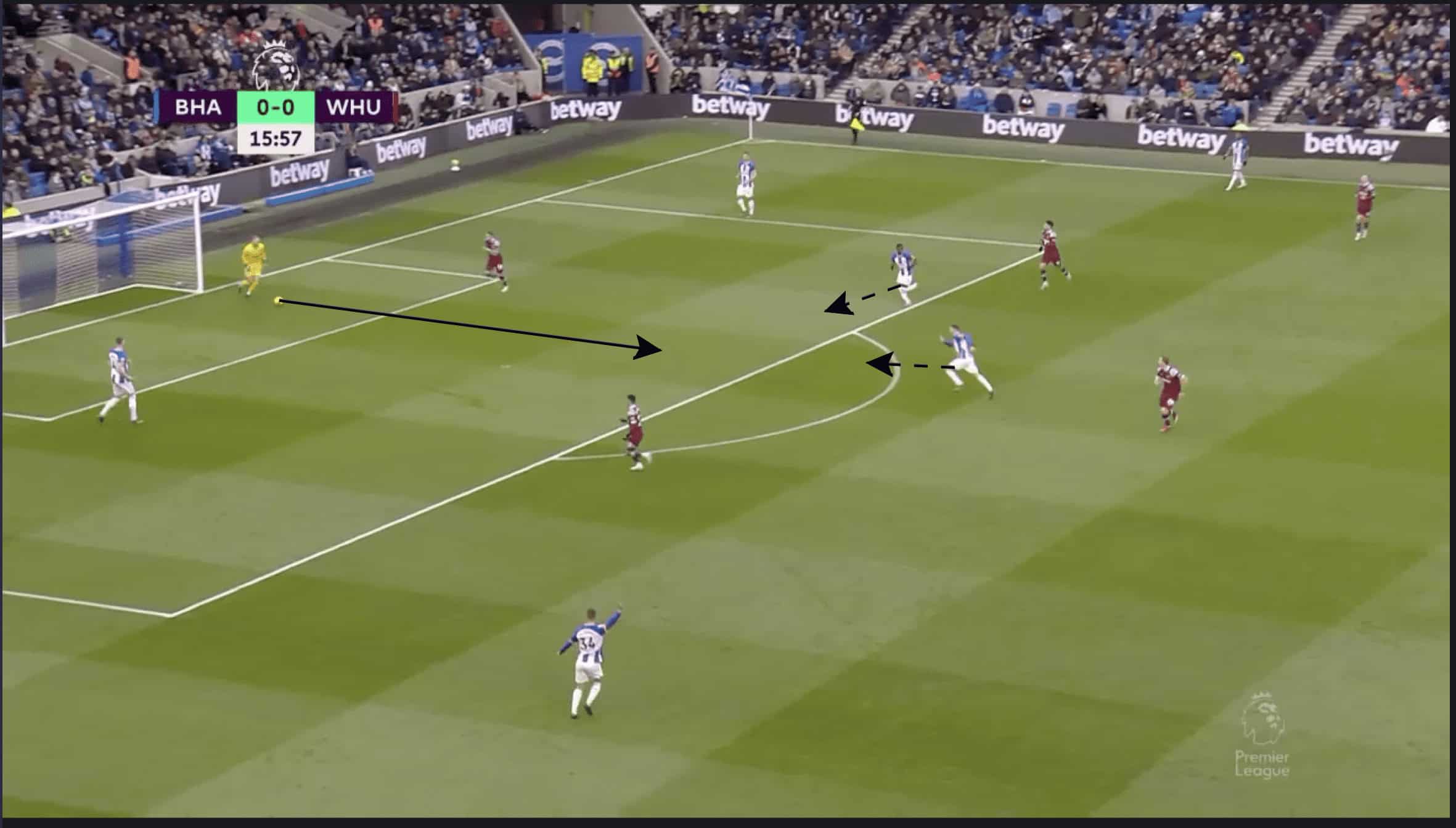
What makes this particularly effective in progressing the ball is that players do not look to stand on the same horizontal lines when receiving the ball, which is particularly the case for Brighton’s double pivot as well as their centre-backs.
This automatically gives the recipient of the vertical pass a player to lay off the vertical pass to, with this player able to receive the ball facing forwards.
Moments later, as can be seen below, Brighton’s double pivot once again position themselves on two different horizontal lines, which allows Caicedo to support the vertical pass to Alexis Mac Allister further up the pitch.
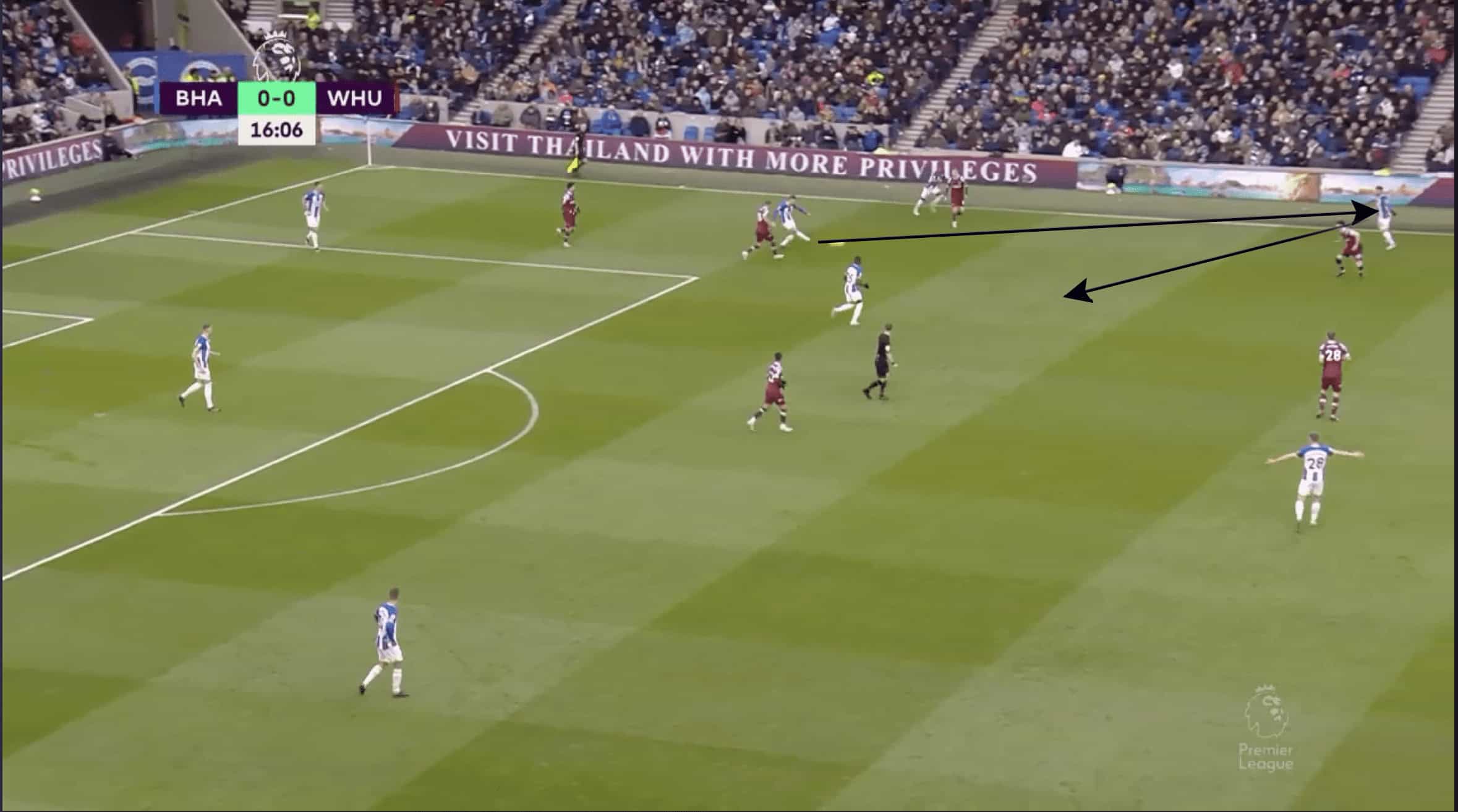
In the example below, we can see another example of players dropping deeper in order to receive the ball.
In this example, Solly March drops deeper to receive the ball from Gross.
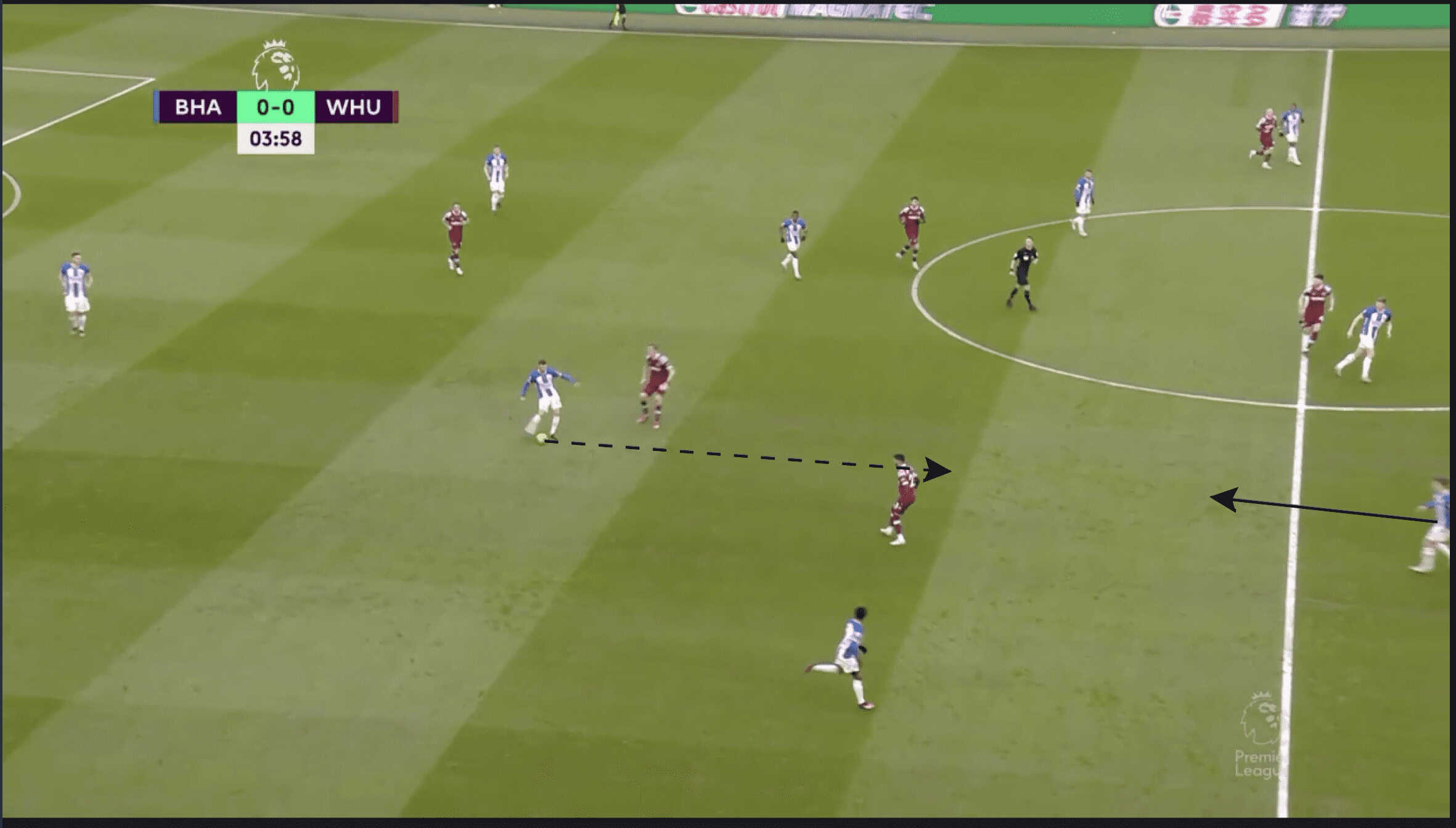
Due to the Brighton players dropping deeper from forward areas, more often than not players receive the ball in the gaps between one line of the opposition’s defence as can be seen below.
What can also be seen in this example is the support that Solly March has from the players around him.
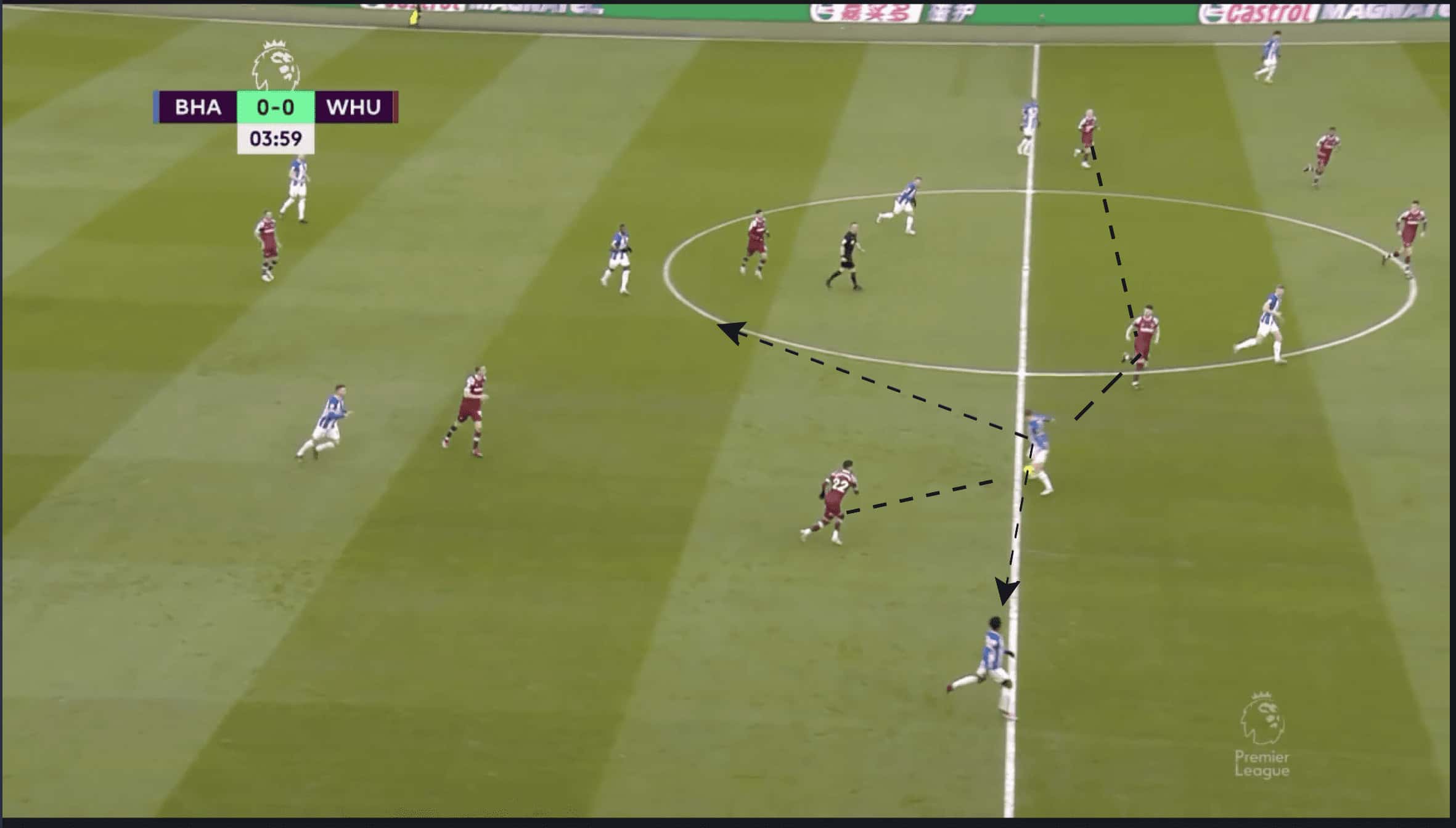
The players in Maurizio Sarri’s Napoli side moved in order to receive the ball between the opposition’s midfield and defensive line.
As can be seen in the example below, both Lorenzo Insigne and José Callejón, the wingers, inverted from their wide positions into the centre between the midfield and defensive line.
Both players are in positions that allow them to provide support to one another, with Callejón also having the option to play a pass to his left.
What can also be seen in the example below is the overloading of the centre by Napoli.
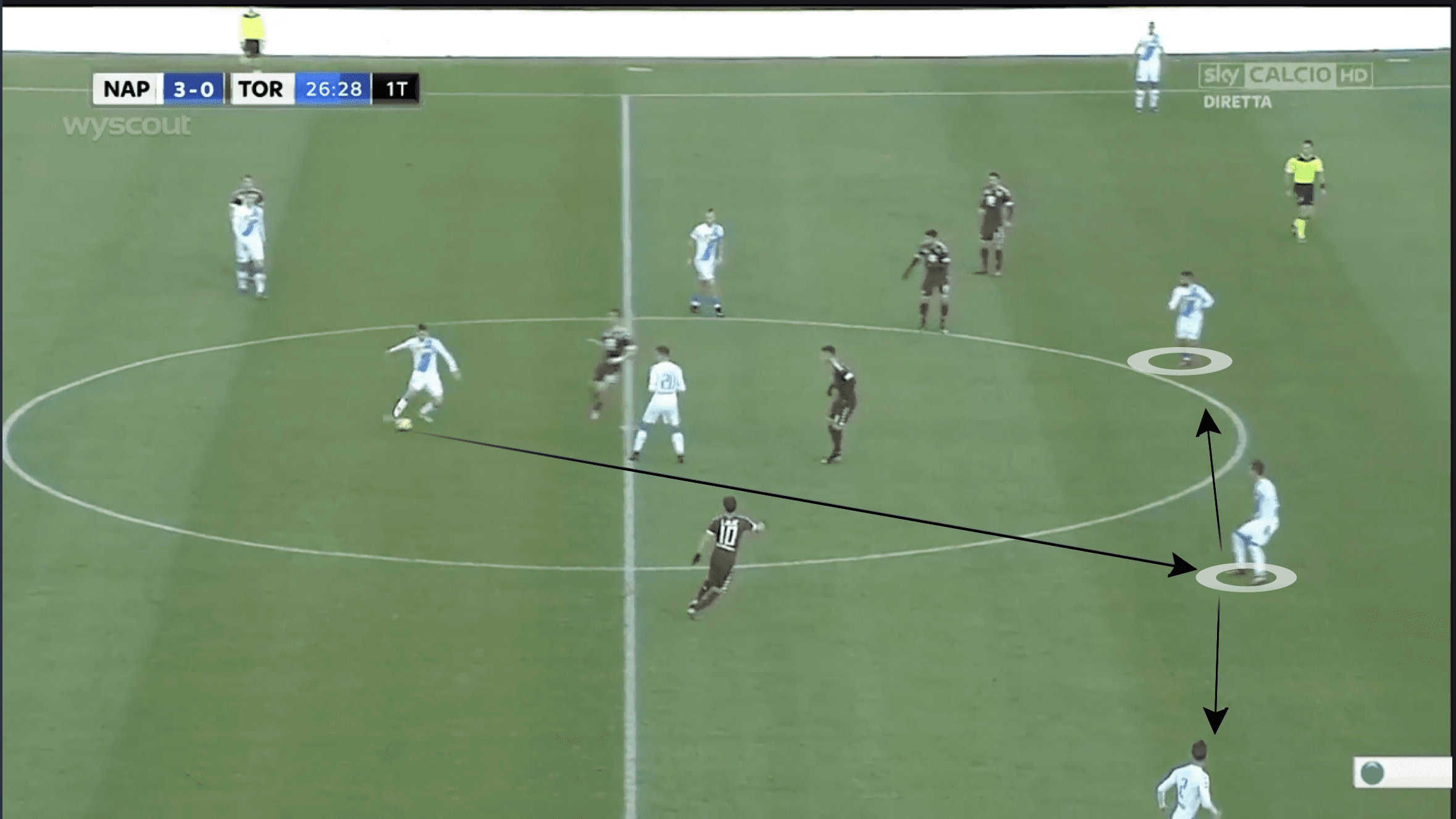
Due to players looking to receive the ball between opposition lines, the opposition often would have to decide whether to advance and cover the Napoli attackers or stay in their defensive line, giving the Napoli attackers more time on the ball once they have received it.
The opposition would find themselves in this situation due to the dangers of the off-the-ball runs into space by the Napoli frontline and midfield.
These off-the-ball runs is what can allow teams to maximise vertical build-up and create chances.
This can be seen in the example below, with Dries Mertens dropping deeper to receive the ball between the lines and as he does so, the opposition defender advances slightly to cover him.
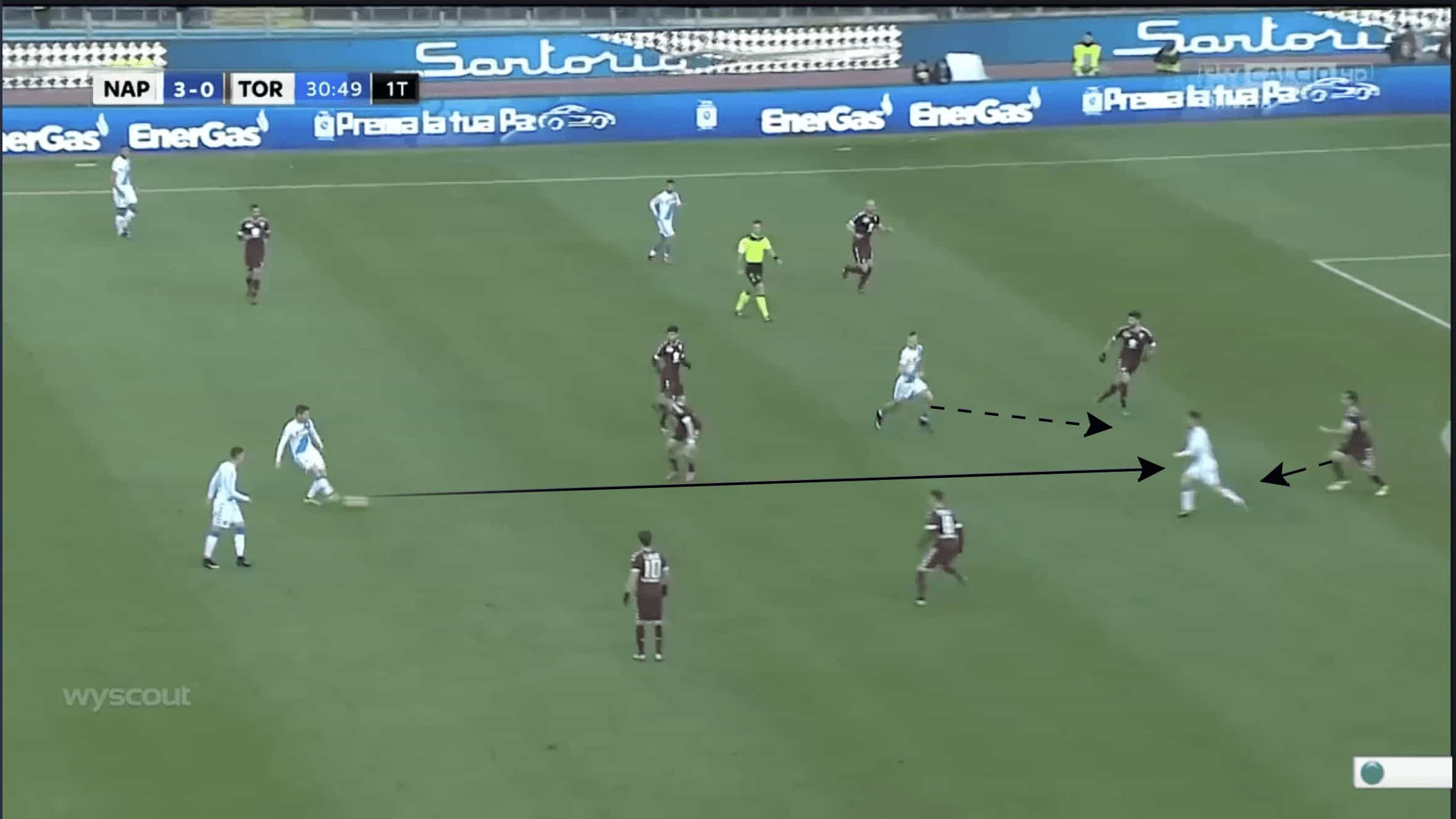
However, as the defender does so, Marek Hamšík runs behind to make a run attacking the space in the backline, creating a shooting opportunity.
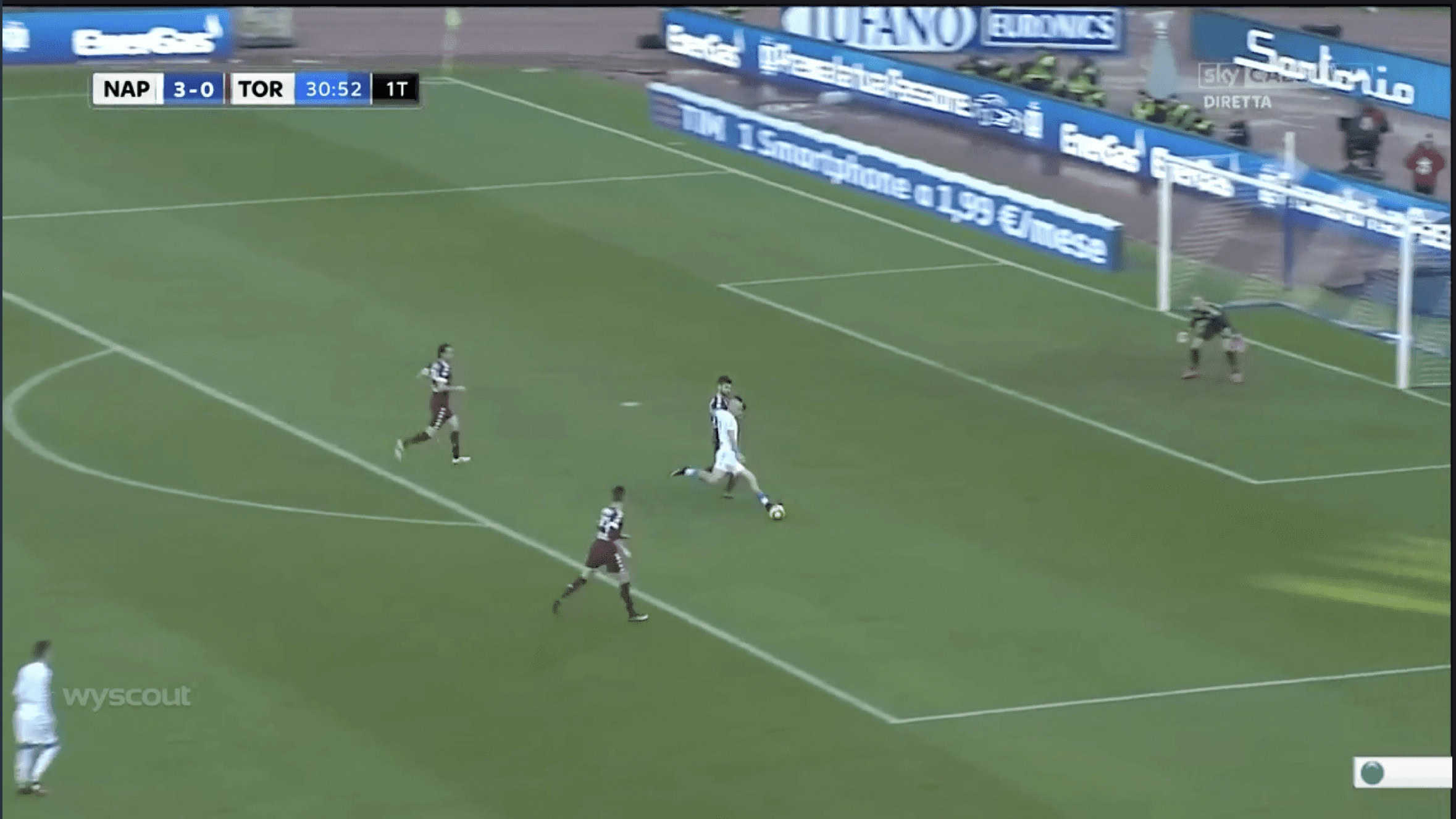
Vertical Passing Drills
5v3 vertical Rondo
Pitch size 7.5x15m
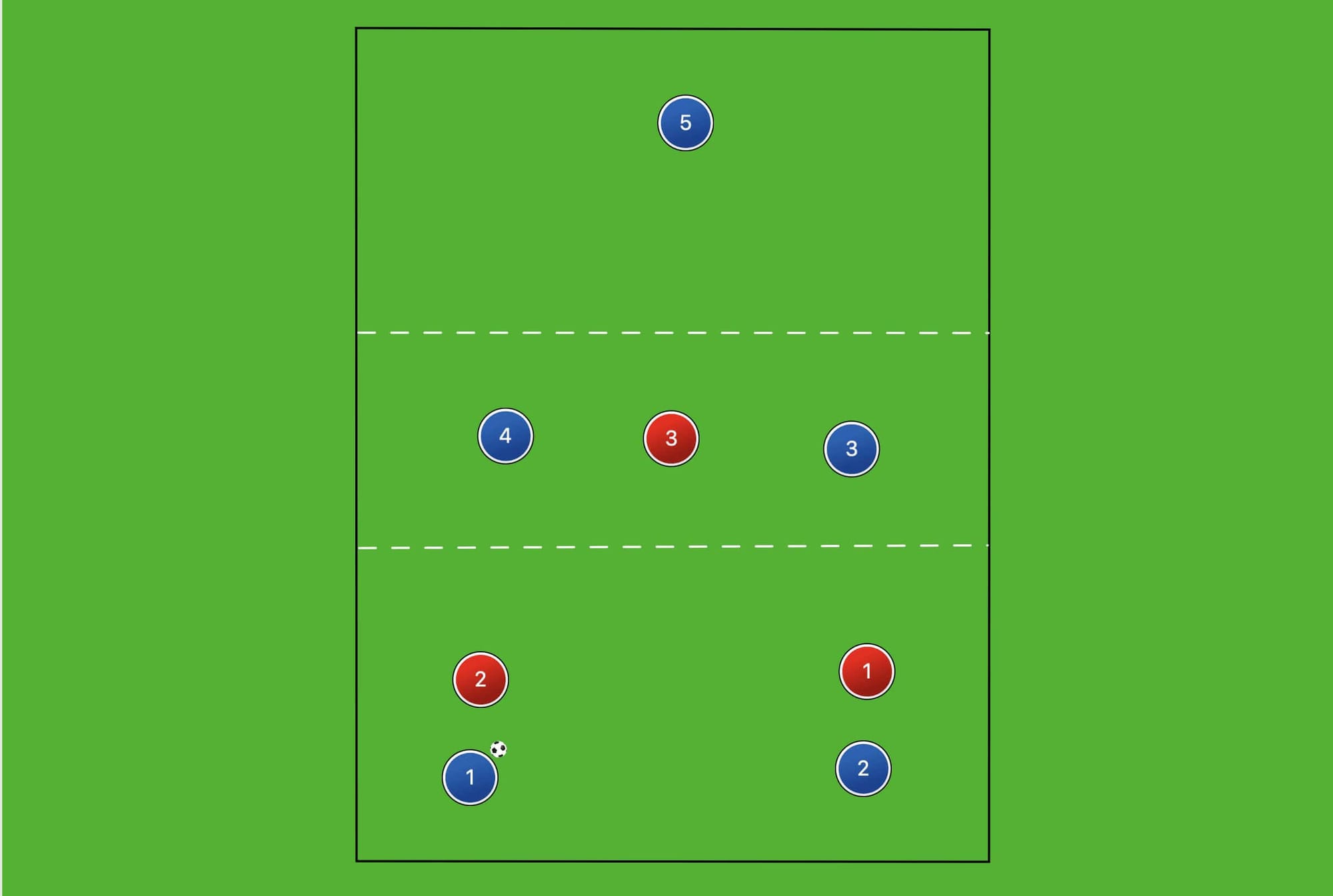
The aim of the game is to play vertical passes in order to switch the ball from one half to the other.
The rules of the drill above are as follows:
The defending team are only allowed two players in one half, with the third player staying in the zone in the middle.
The team in possession are allowed to have three players in one half, with a player in the middle zone allowed to drop into one half and the other player in the middle zone having to stay in the middle zone, as seen in the example below.
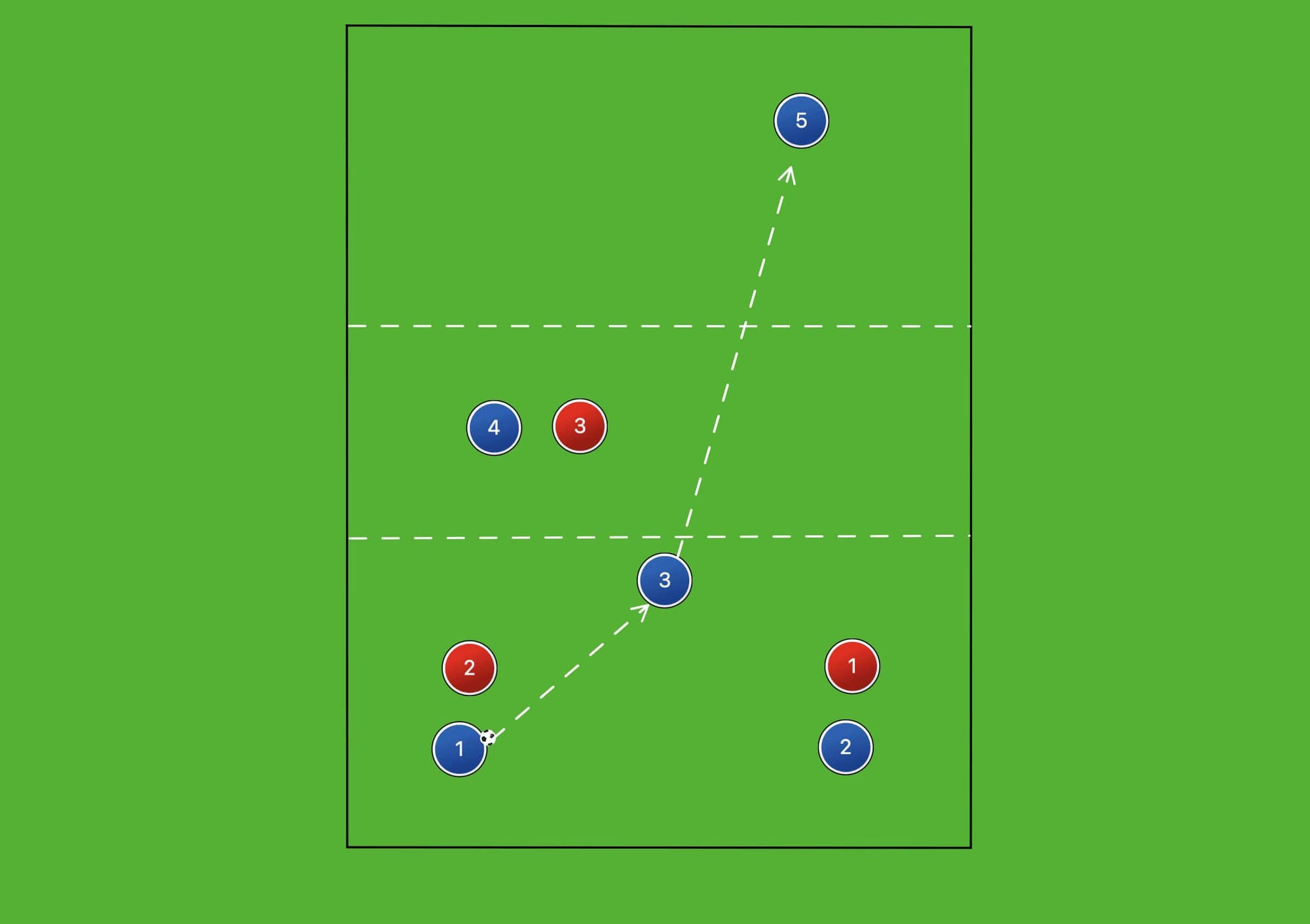
Once the ball is switched to the player in the other half, two players advance to the other half and support the recipient of the switch.
The defending team are once again allowed to have two defenders advance in one half, with one staying in the zone in the middle.
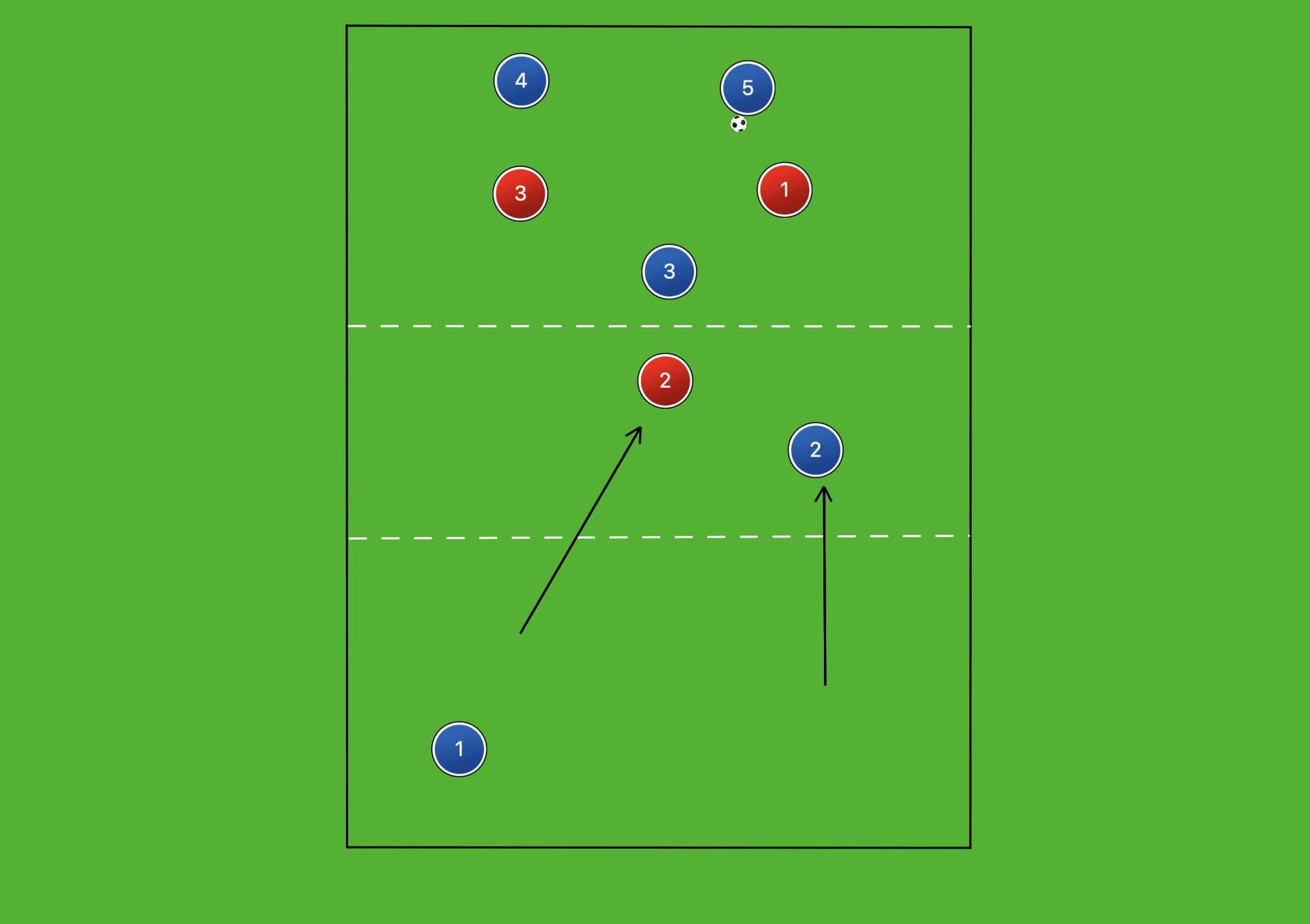
The coaching points of the drill touch on the actions mentioned earlier in the piece.
Players should be encouraged to receive the ball between the lines of the defending team as well as support the recipient of the pass.
Players in possession in one half are allowed to directly switch the ball to the other half which increases the need for the recipient of the pass to have support options when receiving the ball.
8V8+2 3-zone game
Pitch size: 45x45m (can be adjusted depending on numbers)
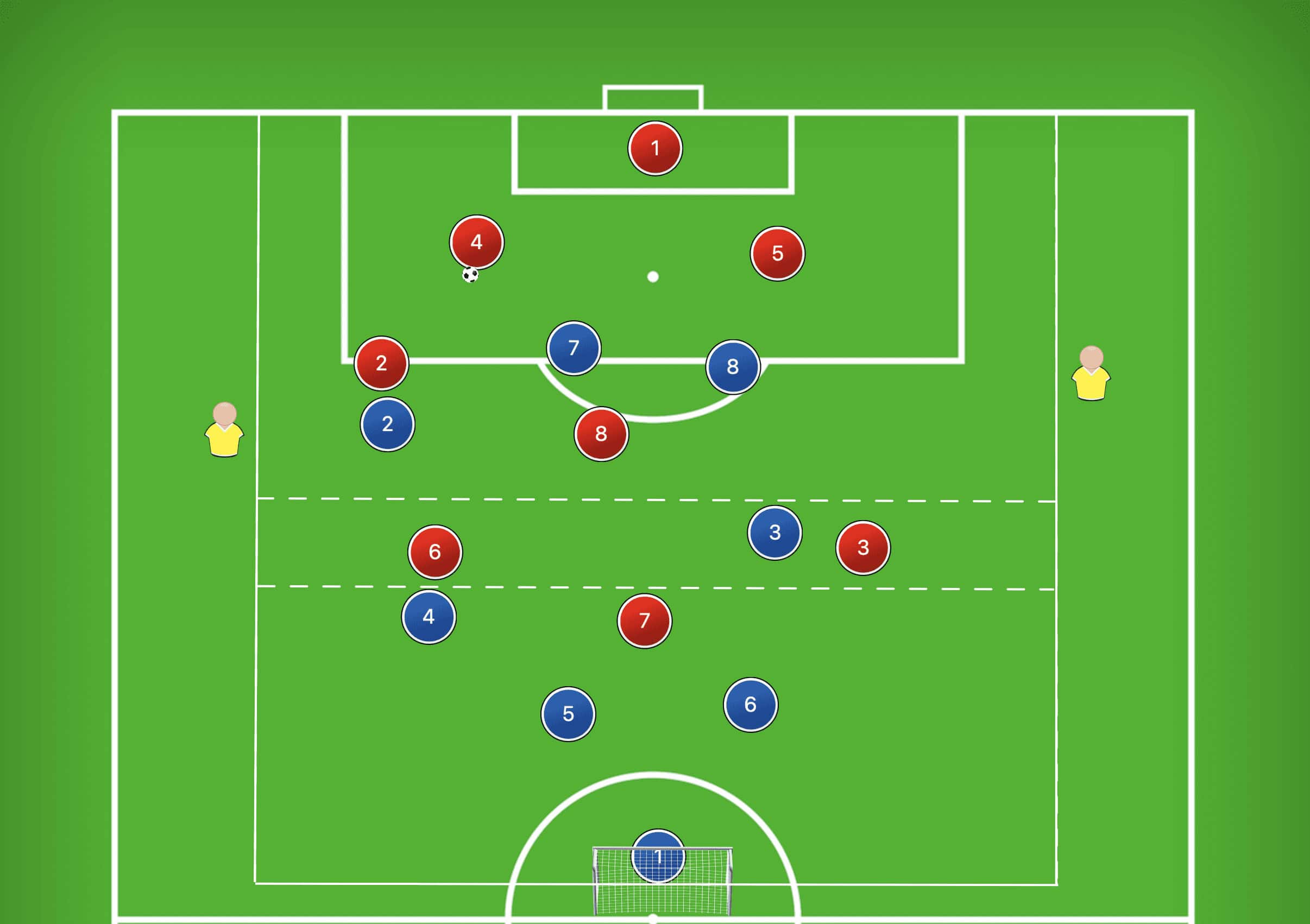
This drill can be seen as a progression from the previous one, although this time, players are put into a game scenario.
For one team, the drill touches on building up from the back using vertical passes and buliding up in the half of the opposition for the other team, also using vertical passes.
Within this game, players are allowed to move freely and are not restricted to one zone.
However, in order to advance the ball into the other half, a player must receive the ball in the middle zone and lay it off to supporting players.
The supporting player receiving the ball can then play a pass into the other half.
This can be seen in the example below, with player number 6 receiving the ball from player number 4.
As he receives the ball, he has the option of laying the ball off to the 8 or the neutral full-back in yellow.
Only when he lays off the pass can the team advance into the next zone.
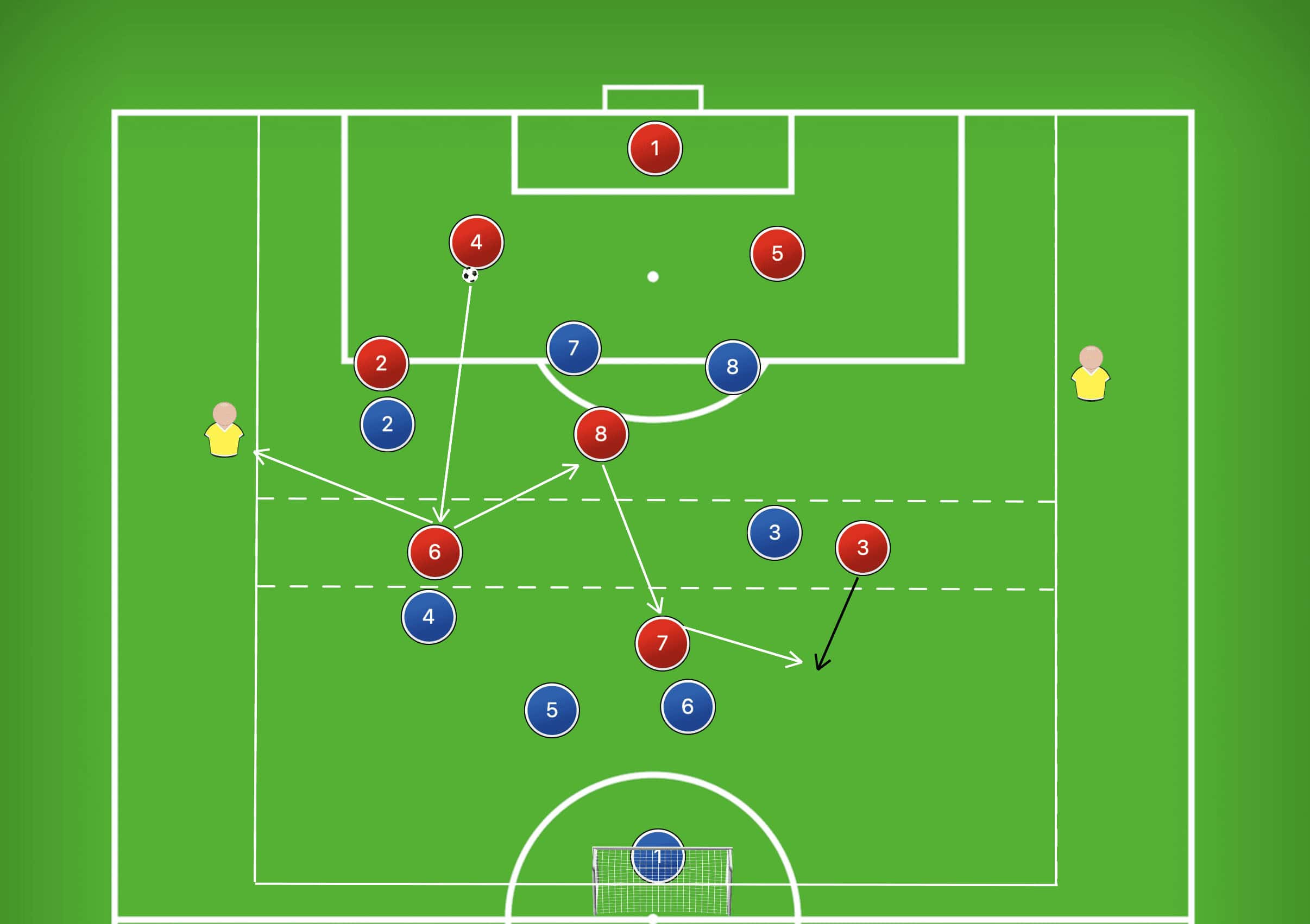
This drill once again focuses on players dropping deeper to receive the ball between the lines, as well as providing support to the recipient of a pass.
Before making a pass into the middle zone, the player in possession will need to assess whether the potential recipient of the pass has enough support from his other teammates in order to receive the pass and lay it off.
An additional coaching point for this drill is movement from the players in possession after the lay off is played in order to exploit the spaces left by the defending team.
9V9 Three zone game
Pitch size: whole half of the field
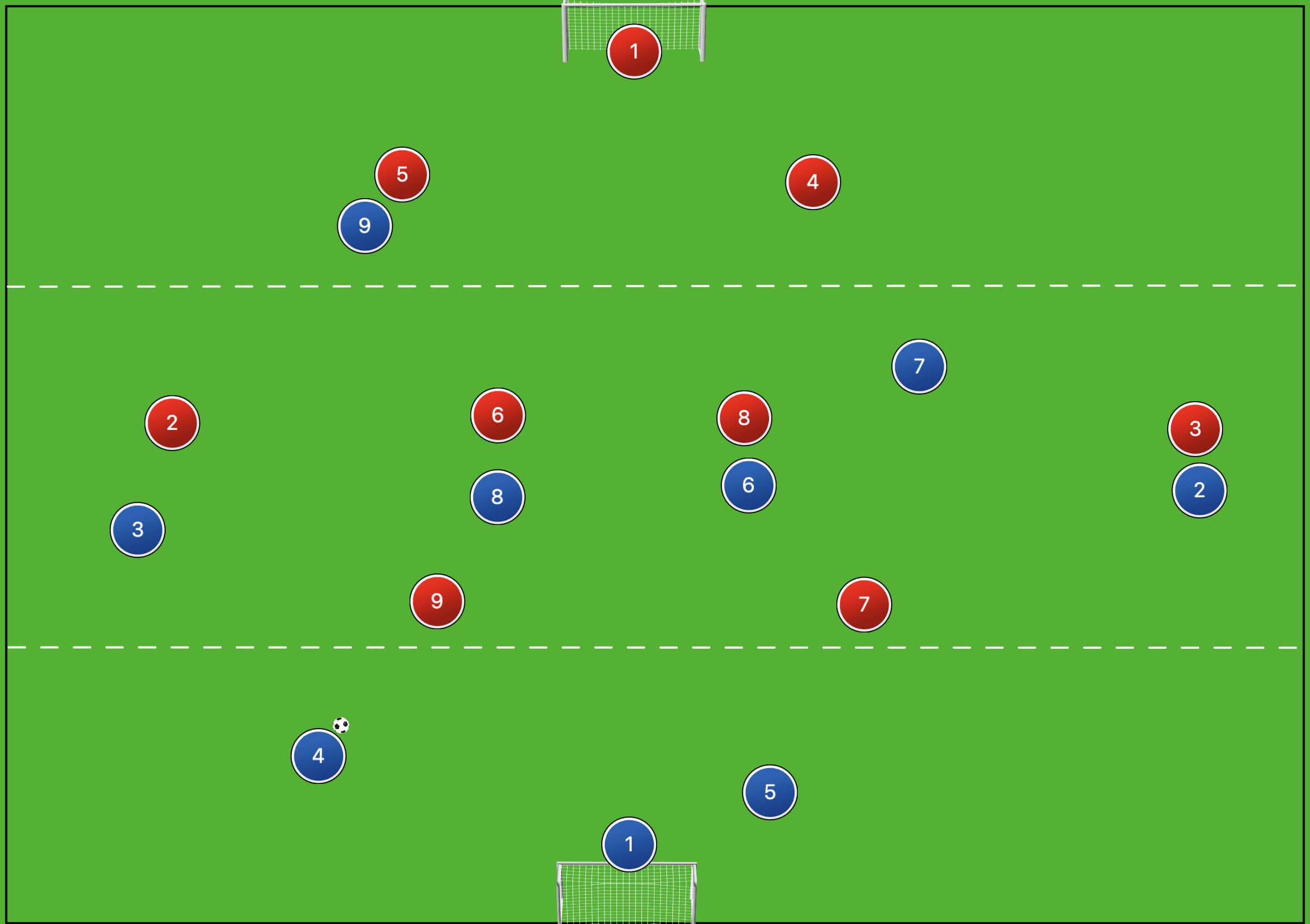
The drill is played as a normal game, looking to marry the actions and concepts mentioned in the previous drills.
The only rule in this game is that the first player to receive a pass in the middle zone only has two touches.
After the player receiving the ball has taken a touch and passed the ball, the other players in the middle zone can take as many touches as they need.
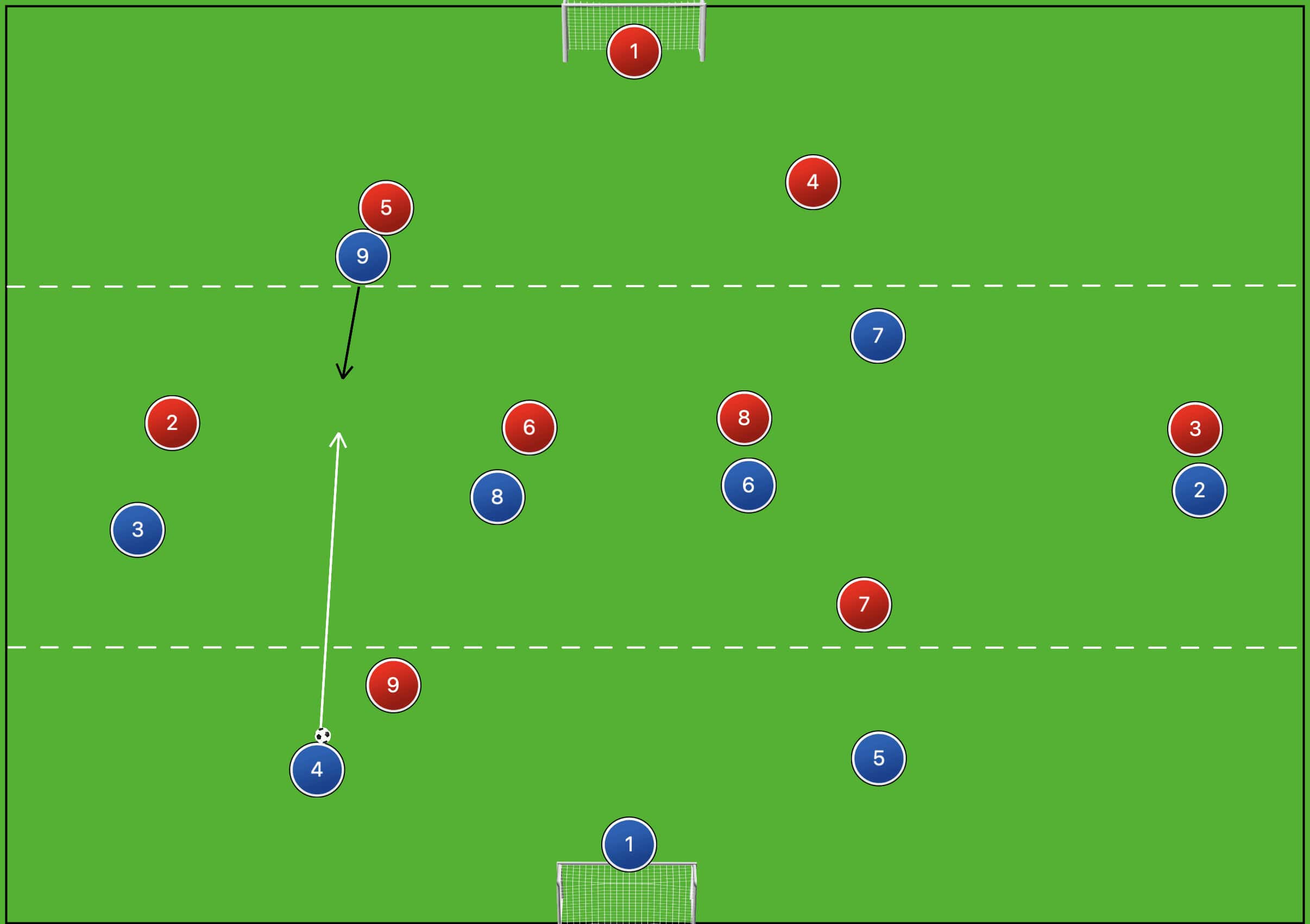
This restriction on the first player receiving the ball is in order to create urgency for the players around him to provide support.
An additional aspect that the three zones add is that other supporting players have a visual representation of a line that they will cross when making runs off the ball and attacking the defensive line.
Players should also ensure that they are not positioned on the same line in order to provide different angles of support.
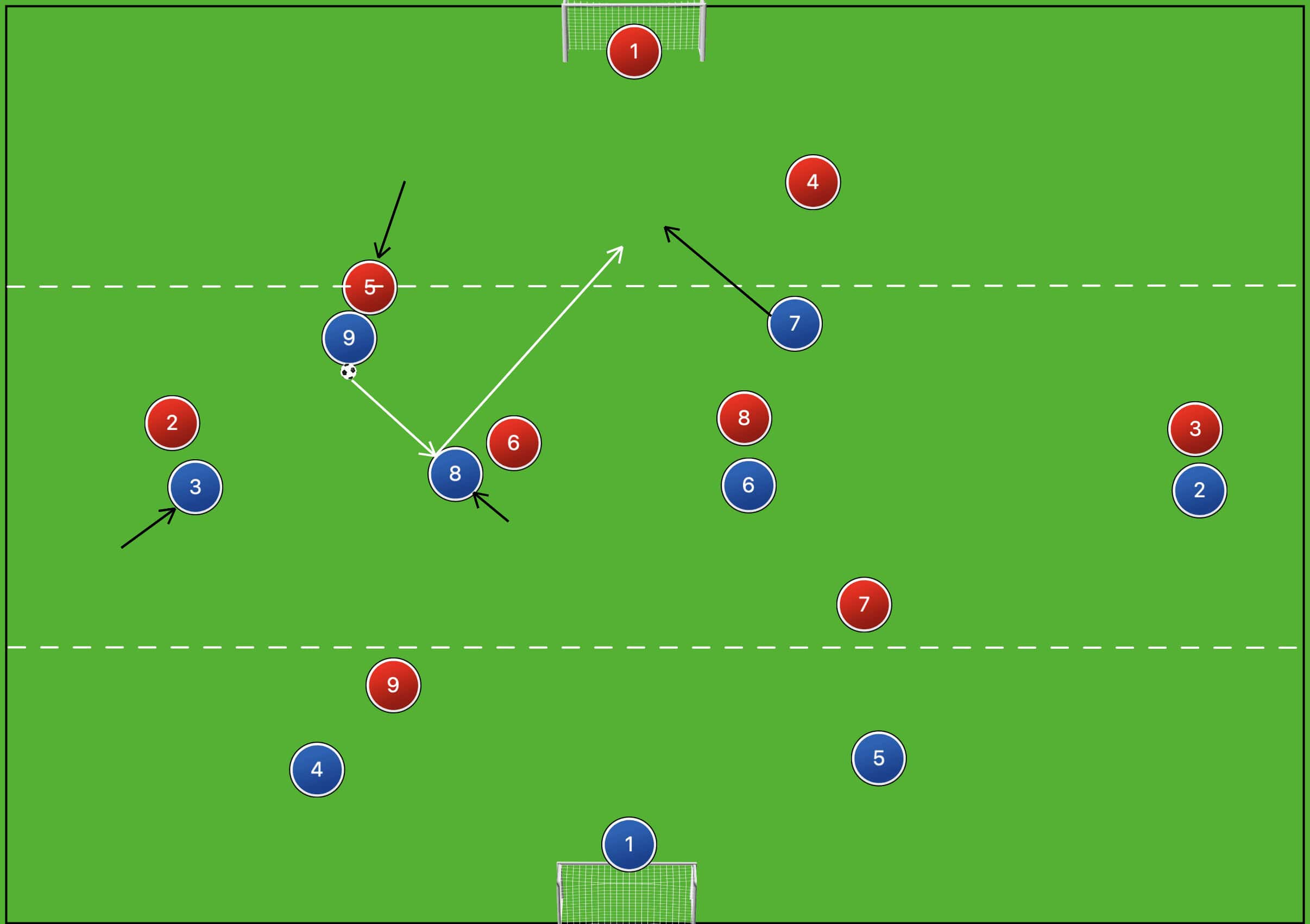
Conclusion
Many will state that players receiving vertical passes receive the ball in sub-optimal positions as more often than not these players receive the ball with their back to goal.
However, this is does not mean that there are no methods and actions that teams can implement in order to turn this disadvantage into an advantage.
When a team is able to implement these actions well, it becomes very difficult for opposition defences to stop.
This analysis has shown how teams use vertical passes in order to progress the ball as well as important sub-principles and actions that sides use in order to do so effectively and how these can be trained.





Comments